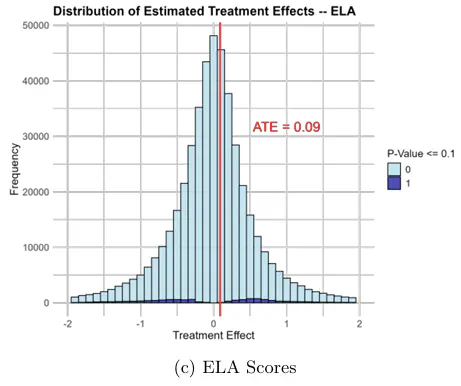Let 1,000 Flowers Bloom (or Wilt): Heterogeneity in National Market-Level Charter School Effects
Nov 8, 2024·, ·
0 min read
·
0 min read
Feng Chen
Douglas N. Harris
Nicholas Lacoste

Abstract
More than 1,000 U.S. school districts nationally have had at least one charter school within its boundaries. In prior work, using a generalized difference-in-differences (GDD) method, we found that increasing charter market share in these locations leads to small positive market-level effects on high school graduation and elementary/middle test scores. These reflect the net effects of various mechanisms—participant effects, various competitive effects, and matching effects. The present study focuses on effect heterogeneity of these market-level effects, using both GDD and machine learning (causal forests). We find considerable variation in these market-level effects across states and districts. Student demographic measures are, collectively, more important than measures related to market context, school funding, or other charter-related policies. Specifically, charter effects are generally larger in districts with more racial minorities and low-income students (especially when test scores are the outcome). School funding plays a complex role because market-level effects are generated by the responses of both charter schools and traditional public schools, whose finances are interconnected. Aside from the above, the results are inconsistent when we switch from test scores to high school graduation rates as the dependent variable. This may suggest that the forces making charter schools effective in raising test scores on average also make them ineffective in raising high school graduation.
Type